How it all began: the story of flying drones
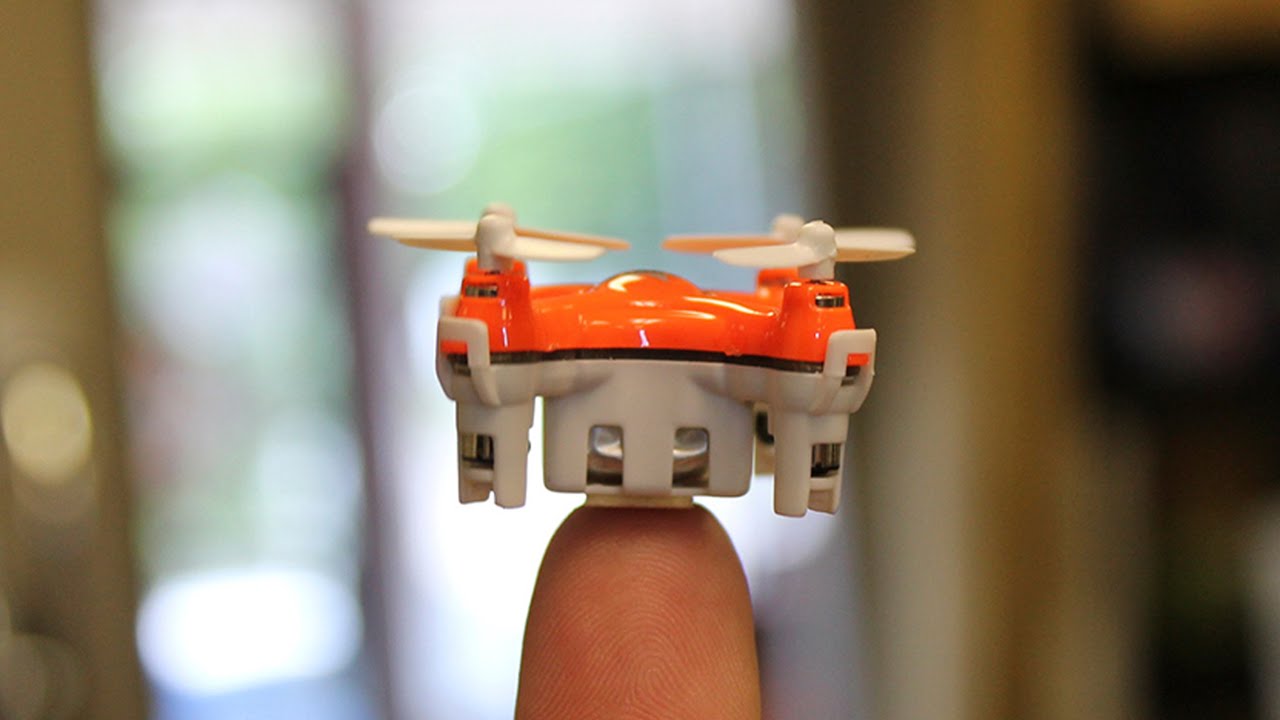
Drones are unmanned aerial vehicles that are either remotely controlled by the operator or they move along a predetermined route. Now these devices are at the peak of popularity. It is not necessary to be surprised, because they can be used for entertainment, photo and video shooting (including professional), military intelligence and surveillance of industrial systems.
Drones are not at all a novelty of the 21st century. The first prototypes did not even appear in the 20th, but in the 19th century, when the "figure" did not exist. What were the ancestors of modern drones and what do they know now?
The beginning of everything
If we talk about the drone as a device that is controlled remotely, the first idea was introduced by Nikola Tesla . The scientist did not just theorize, but registered a patent, which spoke about a vehicle driven by radio waves. Tesla developed the concept of battle drones, which, he believed, would be able to pacify the warlike spirit of nations and end wars thanks to the threat of using “unmistakable and unlimited destructive force.”
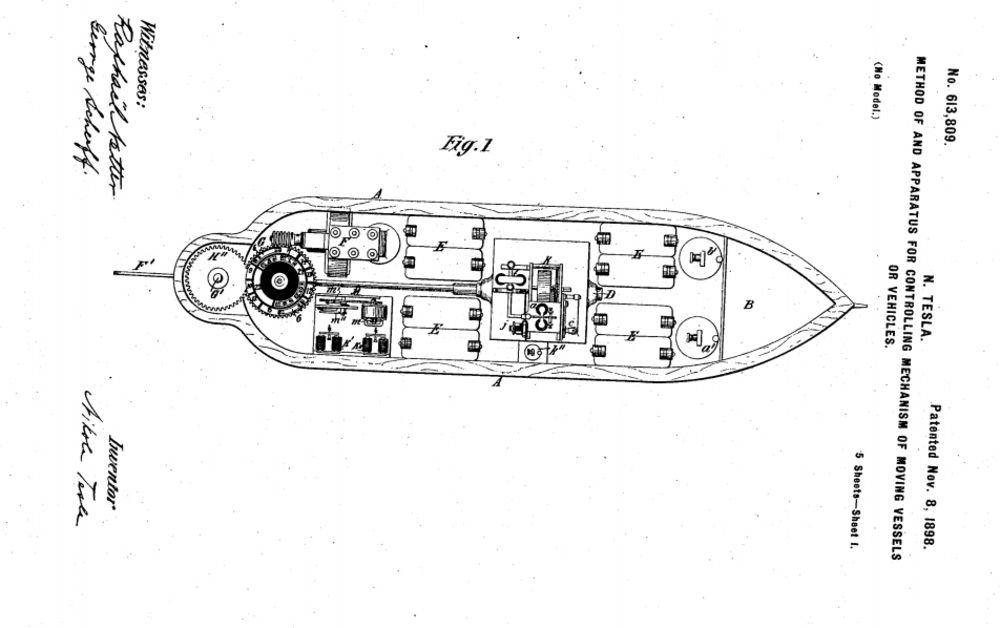
That’s how, according to Tesla, a military unmanned ship might look like (source: United States Patent And Trademark Office )
He held a demonstration of the world's first radio-controlled drone in 1898, in the pond Madison Square Garden. Most of the ideas proposed by Tesla were further developed and led to the emergence of drones in their modern guise.
Idea evolution
One of the first such drones was the Hewitt-Sperry Automatic Aircraft, created in 1917. True, he did not have a radio control, for the flight at a given rate, its creators set up gyroscopes (there were two on board). About how all this worked, information was practically not preserved. But there is a photograph of an automatic airplane.
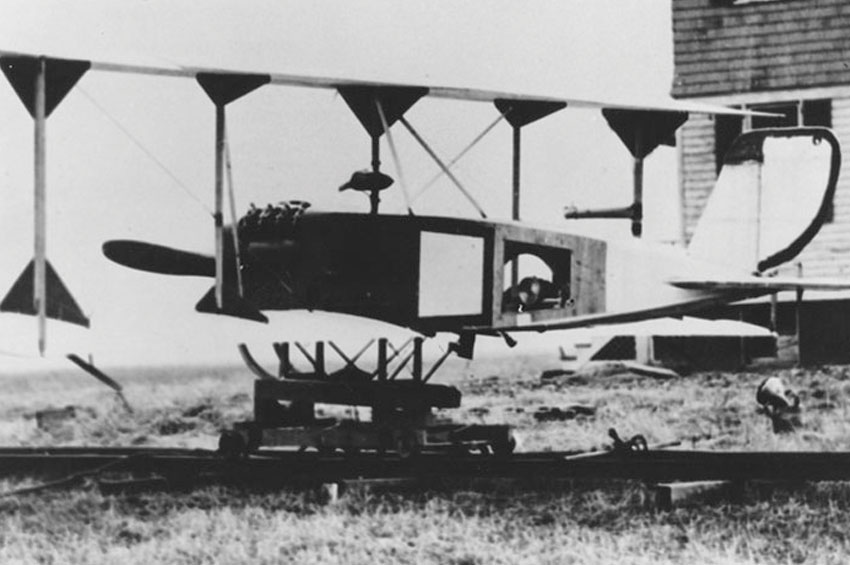
The first combat drone was the "Kettering air torpedo" , developed during the First World War.
Speaking about drones, one should not forget about quadrocopters, which are also far from a novelty. The first prototypes (though manned) were developed back in the 20s of the last century. Two people worked at once to create devices of this type. The first is the designer George Botezat, who lived in the United States and the French engineer Etienne Amichen. The idea of creating an apparatus with four opposed propellers was in the air, so there was nothing surprising in the fact that two people worked on it independently at once.

Copters of that time were able to participate only in test flights without further practical implementation. As it turned out, the systems have three main drawbacks: a
very complex transmission, which must transmit torque from the engine to all rotors at once. She worked, but often broke.
The devices were not stabilized in the air, so the slightest blow of the breeze could put the aircraft out of order.
Too many propellers (Amish proposed eight), plus insufficient maneuverability. So, George Botezat's copter could move more or less normally only in the presence of wind of a certain direction and force.
In the 30s of the last century, the DH.82B Queen Bee drone was mass-produced. It was a biplane, developed on the basis of two aircraft - DH.60 Moth and DH.82 Tiger Moth. The control equipment was a transmitter on vacuum electron tubes and electromechanical relays. This drone was a military one, but was used not in battles, but in exercises - pilots practiced aerial combat techniques on them.
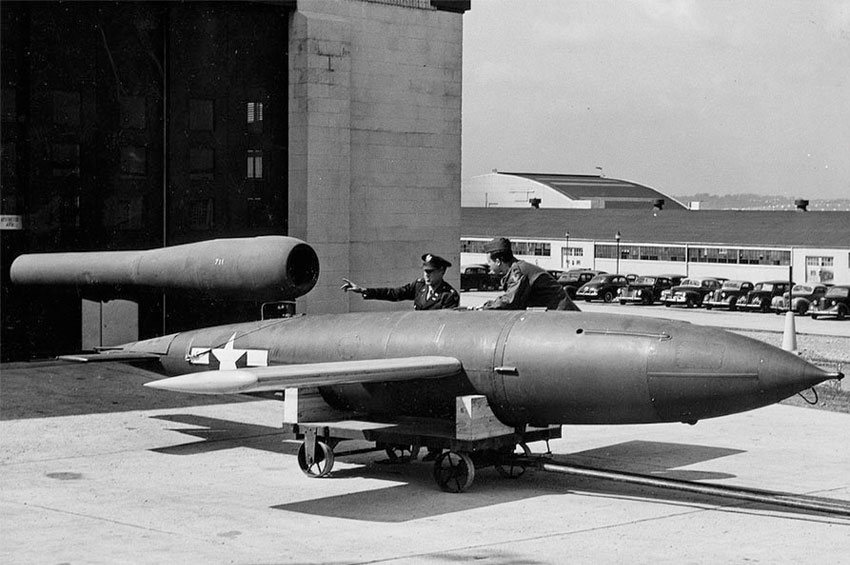
German projectile shells like the V-1 are also drones, their relative success gave impetus to the development of not only rocket technology, but also autonomous aircraft.
Further, drones were used mainly by the military. Among other models, it is worth mentioning the Ryan Model 147E reconnaissance aircraft, developed in the USA and used in Vietnam, Soviet drones Tu-123, Tu-141 and Tu-143. All these are large-sized aircraft, the dimensions of which are approximately the same as those of aircraft with comparable functionality.
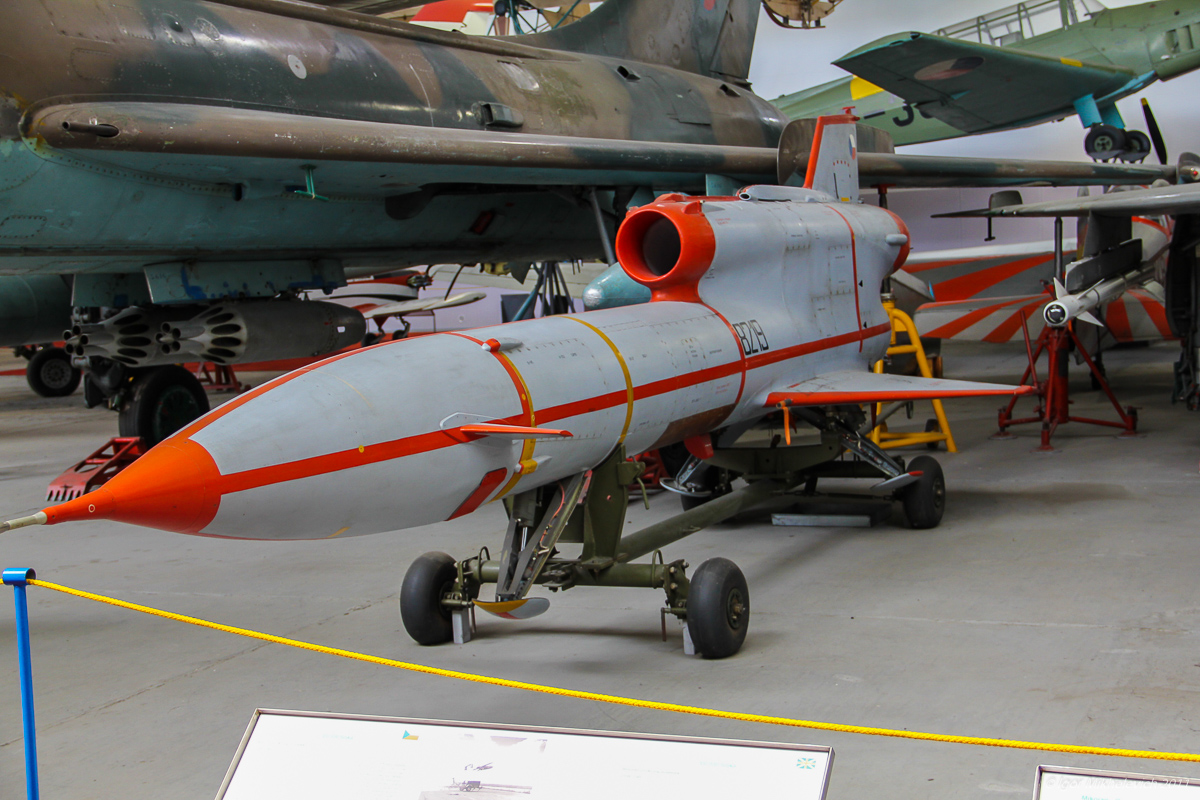
Reconnaissance aircraft Tu-143
In 1982, radio-controlled drones developed by the Israelis entered into business. They were used during the Lebanon war. The most commonly used are IAI Scout and Tadiran Mastiff. They were developed “from scratch”; these were no longer aircraft converted to autonomous flight. Their wingspan was no more than five meters, and weight - about 100 kg. It was possible to reduce the size of drones thanks to the appearance and development of semiconductor electronics, which led to the miniaturization of both household and military equipment.
Well, then other countries, including the United States, began to produce ultra-modern military drones like the MQ-1B Predator and MQ-9 Reaper, capable of transmitting real-time surveillance data. Some models of such drones can shoot at targets, and missiles.
From about the second half of the 20th century, such a direction as household radio-controlled drones began to actively develop. Initially, these were entirely DIY models, which were an imitation of aircraft. But then the business, seeing the demand for radio-controlled aircraft, took the initiative in its own hands.
The advent of modern non-military drones
Experts believe that the era of modern non-military drones began in 2006. It was this year that the US Federal Aviation Administration approved the flights of small custom drones. The distribution was nevertheless received not by household drones for entertainment, but by aircraft for scientific tasks and industry.

So, government organizations using such systems monitored the spread of fires, studied the situation at the epicenter of disasters (earthquakes, floods, etc.). Commercial companies studied the state of oil pipelines, crops and marine land (monitoring the movement of schools of fish). Drones were used (and are used) at a construction site, in geodesy and other fields.
Over time, custom drones have become increasingly popular, which serve as entertainment for flight enthusiasts. From the very beginning, the market for radio-controlled drones was divided into two areas:
- full-fledged aircraft developed by "turnkey" companies;
- components (electronics, electric motors, etc.) that allow you to create DIY systems, fully custom drones.
Among the companies whose products became popular in the first case, one can distinguish Parrot, Gaui, DJI, Xaircraft, GoPro and others. In the second direction, the products of MultiWii, KaptainKuk, ArduCopter are popular. DIY enthusiasts actively use Arduino, Raspberry Pi, etc. boards.
After cameras appeared in the drones that transmit the video stream directly to the phone, video glasses, or laptop, the popularity of personal UAVs skyrocketed. On Habré published a lot of materials about personal drones - a variety of models.
Ethics and security as part of the story
The appearance of cameras and personal drones that can move away from the operator for many kilometers raised a number of questions about the ethical side of working with “home” UAVs. After all, anyone could now look into the window of a neighbor, or the window of a neighboring company, directing the audio and video stream directly to their phone or computer. It became known about a large number of abuses when drone owners filmed what was happening in private homes, offices of commercial and government organizations.
Drones fell on the heads of spectators in sports stadiums , creating a threat to passenger aircraft and industrial facilities. A drone is an almost perfect tool for a peeker, spy (commercial or state), anarchist, etc.
As a result, in many countries, lawmakers hastily adopted new laws governing the sale and operation of drones. Each country has its own laws, but in most cases, drone owners are forbidden to take pictures of people without their explicit consent, UAVs cannot be used near airports, train stations, military and industrial facilities. In most cases, the drone cannot fly to a height of more than 150 meters, manufacturers set limits on both the distance covered by the drone and the maximum speed.
In Russia, obtaining permission to shoot with a multicopter is mandatory. In case of violation of the rule, the perpetrator may be fined in the amount of 3-50 thousand rubles . Yes, and to obtain permission to fly, you must obtain permission. This requires:
- airworthiness document
- access to the operation of the airspace
- UAV control eligibility certificate.
Piloting drones in the Russian Federation is regulated by such documents:
- the air code of the Russian Federation,
- CC, article 271.1 of the Federal Law,
- ACRF, Article 11.4 (“Violation of the rules for the operation of the Russian airspace”),
- rules of operation of the airspace of the Russian Federation at the federal level.
In Russia, such UAV models are allowed:
Syma,
- Gopro Karma,
- Yuneec
- DJI (Inspire, Mavic, Phantom 2,3,4),
- similar in size and functionality devices from other manufacturers.
What's next?
The future of drones is not limited to personal models. After multicopter has become popular, their capabilities are actively explored by business:
- use at industrial facilities (safety, checking the condition of various units and pipelines),
- agricultural use,
- cargo delivery,
- delivery of people.
Copters are also used in medicine, for example, for the quick delivery of necessary medicines. The other day, UPS announced the launch of the drone drug and drug delivery service . True, so far the service works only in one US city - Raleigh (North Carolina). Drones will provide delivery on a specific route between hospitals and WakeMed medical centers. DHL tested the
delivery of cargo using drones in 2013, and now this practice is becoming increasingly widespread.
Not far behind DHL and Amazon - in the same 2013, the company announced the Prime Air service (it works in a limited number of regions), which is positioned as the fastest way to deliver purchases. With it, purchases are delivered within half an hour, which is at least four times faster than the fastest ground service Amazon Prime Now.
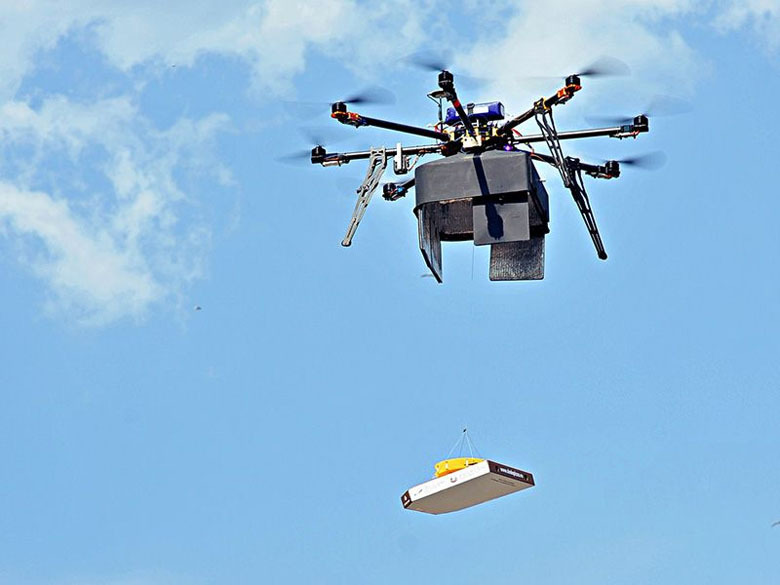
At one time, Russia tested the service of cargo delivery by Copter Express copters. On June 21, 2014, Dodo Pizza began to deliver pizza with drones for advertising purposes , and only six boxes were delivered. After that, the officials decided to fine the creator of the company, which supplies drones for 50 thousand rubles. But although the fine was then abolished, the delivery of goods by drones in the Russian Federation was not particularly widespread.
They deliver (or rather, plan to deliver) using drones and people. So, some companies, including Uber and Lyft, are developing air taxi services . Other companies are doing similar work, including a startup from Saudi Arabia.
AI technologies are gradually developing, and battery capacities are growing, so there is no doubt that drones will become smarter, more maneuverable and more functional. They will become an integral part of many areas of our lives: work and study, including transport, research, cargo delivery and all the rest, as I mentioned above.
